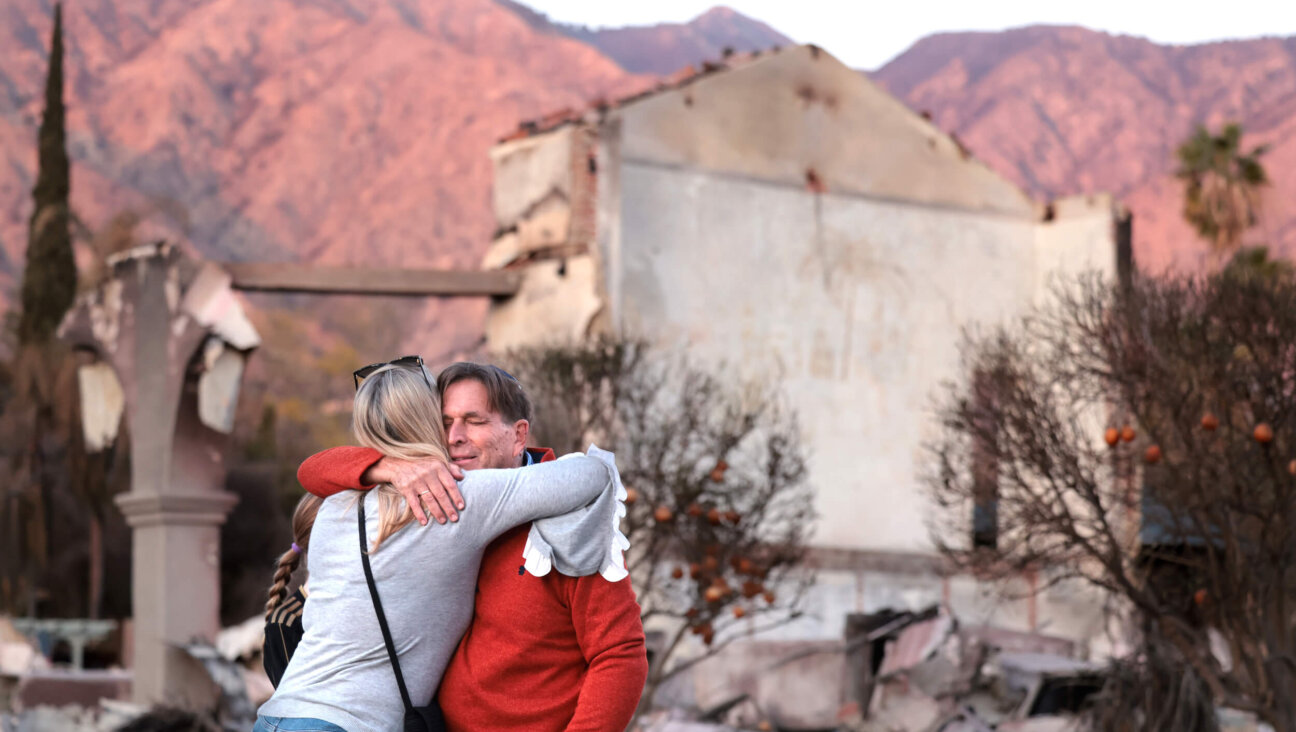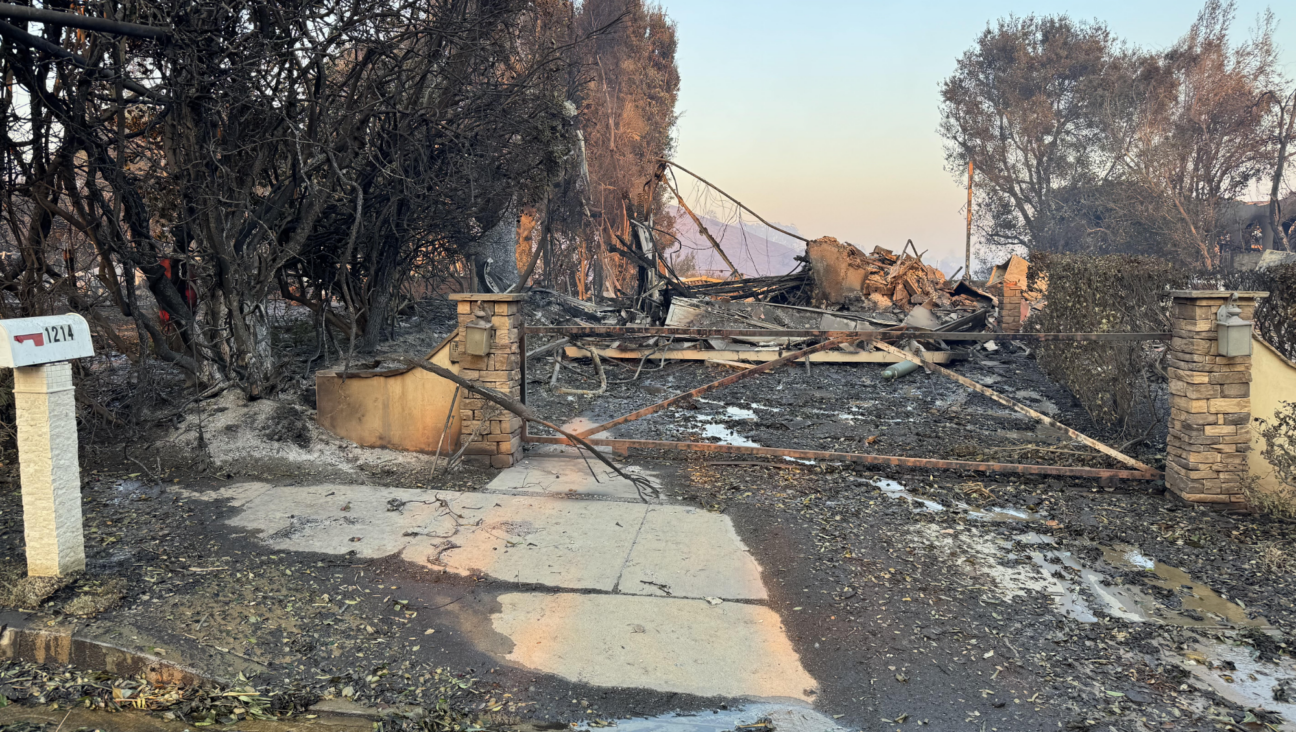How good it is to sit together: Why we re-opened our religious school during the pandemic

Stephen Wise Free Synagogue Courtesy of facebook
When we decided last spring to give all of our religious school students the option to attend in person, I’m pretty sure most people thought it was a pipe dream — and a risky one at that.
We had also thought about other ways to reach our students and how to make virtual classes and programs as engaging as possible. I was so proud of the small group Hebrew program we started in quarantine and continued this year. Our students had more success and skill growth than any year prior, and developed lovely relationships with our Hebrew teachers. I was impressed with the creativity of our teachers who found ways for kids to create tefillin in their home, to have snack and story time over Zoom, and even to participate in prayer together. Something special happened between computers, but even with all that innovation, I still knew we needed to offer more: we needed to attempt to have in-person religious school classes.
So with the support of our synagogue’s entire clergy and staff, and help from the very thoughtful parents on our Religious School committee, we planned for how to open our doors. As the opening week approached, I thought with trepidation about the 100 or so students who would be coming into our building throughout the week to attend religious school in person for the first time since March. I stayed up nights thinking about the risks that I was asking my staff to take. I replayed every detail, every part of the day in my head and held my breath as we opened the doors for the first time.
Ironically, it was the calmest and most organized opening day in my entire career. Children were eager and excited. Parents were patient and understanding. Masks stayed on and kids shared ideas even if they didn’t share snack. Finally, there was life again inside the walls of our synagogue. The joy and relief were palpable. More than that, the feeling of community was revitalized.
There were lots of other ways that we tried to build community this year. It was amazing to be able to engage with our students in their homes — to be invited into new parts of their lives. It was fun to have dogs join Zoom classes and for kids to be able to attend no matter what state or time zone they were in. In fact, even if everything were to return to “normal” tomorrow, we wouldn’t stop offering virtual options — it’s exciting, flexible, convenient and a great alternative.
Yet, try as we might, nothing beats sitting in a room together. Learning builds community. Physical togetherness builds community. Proximity to people, even if it’s six feet farther than we want, makes everything feel different. “Hinei mah tov u’mah nayim shevet achim gam yachad,” we sing — “How good it is to sit together like brothers and sisters.”
Long before this pandemic struck, we struggled with how to make use of technology while not succumbing to it. Before there were lockdowns, we worried about the isolating effect of the iPhone. Yet throughout this pandemic, I’ve been grateful we had all those gadgets and tools so we could have Zoom Seders, pray through Shabbat from our couches, and make latkes together in each other’s kitchens. But we can go only so far in building community when we are in different physical spaces — in fact, research shows that face-to face meetings increase connections even among members of fully online communities, like SecondLife, Twitterers or Yelpers.
Since we welcomed them back, each week that our students were here together, they developed deeper bonds to each other and to our synagogue. By the end of November, I knew each student by the colors of their coats and could recognize parents even through their face masks. Our older students became a sort of support group for one another as they struggled with health and wellness. Some of our younger students who had never really gotten to know each other formed tight bonds and made new friends. Teachers who came into the building were always ready to pitch in and do more, taking on tasks we had never asked of them before. Together, we honored the fear and anxiety that was around us while not allowing it to overcome us. And together, we built the sacred space that is a learning community — even though we couldn’t build hanukiot, share markers or hold hands.
Yes, I know that not everyone felt that having indoor classes was necessary or smart. I know there were and remain risks involved that we could never minimize 100%. Was it worth it? To feel a sense of community, to bond with one another and to see the synagogue as the safe, spiritual center it can be — absolutely.
Rabbi Rena Rifkin is the director of youth education at Stephen Wise Free Synagogue, a Reform congregation on New York’s Upper West Side.
A message from our Publisher & CEO Rachel Fishman Feddersen

I hope you appreciated this article. Before you go, I’d like to ask you to please support the Forward’s award-winning, nonprofit journalism so that we can be prepared for whatever news 2025 brings.
At a time when other newsrooms are closing or cutting back, the Forward has removed its paywall and invested additional resources to report on the ground from Israel and around the U.S. on the impact of the war, rising antisemitism and polarized discourse.
Readers like you make it all possible. Support our work by becoming a Forward Member and connect with our journalism and your community.
— Rachel Fishman Feddersen, Publisher and CEO























